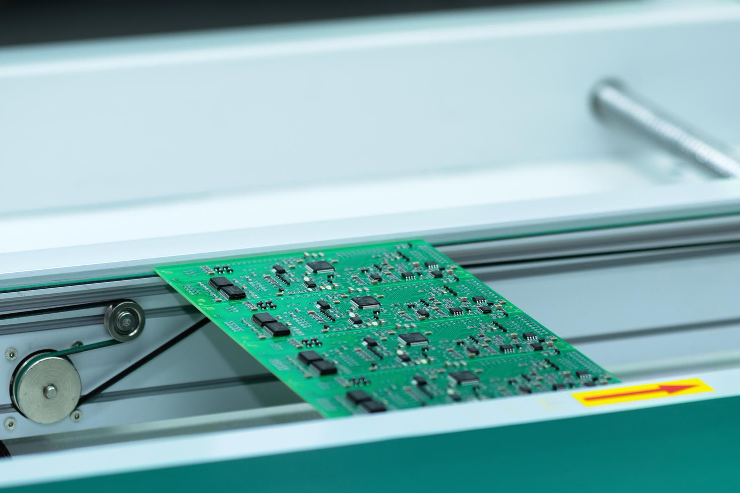Identifying Defects and Troubleshooting in Plastic Injection Moulding
- josh61940
- Nov 5, 2024
- 4 min read

Welcome to the final instalment of the Amey Plastics blog series exploring the definitions and terms commonly found in the plastic injection moulding industry. In our previous posts, the Amey Plastics team have explored mould tool components, processes, part design and characteristics essential for successful plastic injection moulding. In this concluding entry, we'll focus on common defects encountered during the injection moulding process and provide troubleshooting tips to address them. Understanding these issues will help you improve your production quality and efficiency.
Short Shot
A short shot occurs when the mould does not fill completely, resulting in a partially formed part. This defect can lead to missing features, reduced functionality and wasted materials. Common causes of short shots include insufficient injection pressure, inadequate material supply or a clogged nozzle. To troubleshoot, ensure that the injection pressure is set correctly and that the material feed is uninterrupted. Adjusting the mould temperature or optimising the injection speed may also help achieve complete filling.
Burn Marks
Burn marks are dark or discoloured areas on the surface of a part, often caused by overheating during the injection process. This issue can arise from excessive injection pressure, high melt temperatures or prolonged residence time of the molten plastic in the barrel. To prevent burn marks, ensure that the material is not exposed to excessive heat for extended periods and consider adjusting the injection speed and pressure settings. Additionally, maintaining proper venting in the mould can help release trapped air and reduce the risk of burn marks.
Weld Lines
Weld lines appear as faint lines or seams on the surface of a part, typically occurring when two or more flow fronts meet during the injection process. While weld lines are not always detrimental, they can compromise the part's aesthetics and strength. Factors contributing to weld lines include low injection speed, inadequate mould temperature and improper venting. To mitigate weld lines, consider increasing the injection speed to allow for faster filling, adjusting the mould temperature to enhance flow and ensuring proper venting to minimise air entrapment.
Stress Marks
Stress marks are visible lines or patterns that indicate areas of internal stress within a part. These marks can arise from rapid cooling, uneven wall thickness or excessive pressure during injection. Stress marks can weaken the part and affect its performance over time. To address this issue, ensure uniform wall thickness in the design and optimise cooling times to allow for gradual solidification. Additionally, monitoring injection pressure and adjusting mould temperature can help reduce internal stresses and improve part quality.
Flash
Flash occurs when excess material escapes from the mould cavity, creating thin, unwanted projections on the part's edges. This defect can arise from insufficient clamping force, misalignment of mould halves or wear and tear on the mould. To troubleshoot flash, increase the clamping force, ensure proper alignment of the mould and regularly inspect and maintain the mould to prevent wear.
Warping
Warping is the distortion of a part after it has cooled, leading to uneven dimensions and compromised functionality. Common causes include uneven cooling, non-uniform wall thickness or excessive residual stresses in the material. To address warping, optimise the cooling process, maintain uniform wall thickness and adjust the mould temperature to achieve even cooling.
Surface Defects (e.g., Pitting or Pores)
These defects manifest as small holes or pits on the part surface, affecting aesthetics and functionality. They can arise from contaminants in the material, moisture in the resin or improper processing conditions. To troubleshoot surface defects, ensure materials are dry and clean, check for contaminants and review processing parameters to reduce moisture exposure.
Colour Variation
Inconsistent colouration across parts can indicate issues with material mixing or processing. Common causes include inadequate mixing of colorants, fluctuations in material temperature or variations in injection speed. To mitigate colour variation, ensure thorough mixing of colorants, maintain consistent processing temperatures and monitor injection speeds for uniformity.
Splay Marks
Splay marks are streaks or lines on the part surface caused by moisture or gas trapped in the material during injection. This defect can occur due to high moisture content in the resin or inadequate venting. To address splay marks, dry the material before processing and ensure that the mould is properly vented to release trapped gases.
Inconsistent Weight or Size
Variations in the weight or size of the parts can lead to quality control issues. Common causes include inconsistent material flow, varying injection pressures or fluctuations in material temperature. To address this issue, monitor and control the material flow rate, maintain consistent injection pressures and regulate material temperatures during processing.
Quality & Reliable Parts
Being aware of these common defects and their troubleshooting methods is essential for anyone involved in the plastic injection moulding industry. At Amey Plastics, we are committed to delivering high-quality, reliable parts by proactively addressing potential issues throughout the production process. By mastering these concepts, you can enhance your understanding of injection moulding and ensure your products meet the highest standards.
We hope this blog series has provided valuable insights into the intricacies of plastic injection moulding. If you have any questions or need expert assistance with your injection moulding projects, feel free to contact Amey Plastics at 01730 266 525 or email sales@ameyplasticsltd.co.uk. As always, we are here to help!






Comments